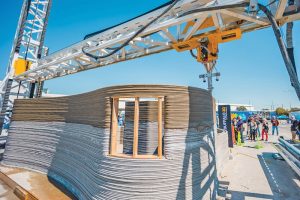- 23 February 2024
- 329
Engineering the Future: Advancements Reshaping Civil Engineering

Introduction:
Welcome to the forefront of innovation in civil engineering, where the future is being shaped by groundbreaking advancements. In this article, we’ll explore how modern technology and pioneering techniques are transforming the landscape of civil engineering. From sustainable materials to smart infrastructure, join us as we delve into the exciting developments that are reshaping the field.
Sustainable Materials: Paving the Way for Eco-Friendly Infrastructure
Embracing sustainability is a cornerstone of modern civil engineering. Discover how eco-friendly materials such as recycled concrete and bio-based polymers are revolutionizing construction practices, reducing environmental impact, and enhancing durability.
Smart Infrastructure: Building Cities of the Future
Unlock the potential of smart infrastructure as we explore the integration of sensor technology, data analytics, and artificial intelligence in civil engineering projects. From smart roads to intelligent buildings, learn how these innovations are improving safety, efficiency, and sustainability in urban environments.
3D Printing: Transforming Construction Methods

Step into the realm of 3D printing and witness its transformative impact on construction. Explore how additive manufacturing is revolutionizing traditional building methods, enabling rapid prototyping, intricate designs, and cost-effective construction of complex structures.
Augmented Reality: Enhancing Design and Visualization
Experience the power of augmented reality in civil engineering as we examine its role in design, planning, and visualization. Discover how AR technologies are revolutionizing the way engineers conceptualize projects, improve decision-making, and communicate ideas to stakeholders.
Robotics and Automation: Streamlining Construction Processes
Meet the robots revolutionizing construction sites worldwide. From autonomous drones to robotic arms, delve into the realm of robotics and automation in civil engineering. Explore their role in tasks such as site surveying, material handling, and even bricklaying, increasing efficiency and safety on the job site.
Digital Twins: Simulating Real-World Scenarios
Enter the realm of digital twins, virtual replicas of physical assets, systems, or processes. Discover how this technology is revolutionizing asset management, predictive maintenance, and urban planning, providing valuable insights into the behavior and performance of infrastructure systems.
Key Points Table:
| Advancement | Description |
|---|---|
| Sustainable Materials | Eco-friendly materials like recycled concrete and bio-based polymers. |
| Smart Infrastructure | Integration of sensor technology, data analytics, and AI in urban projects. |
| 3D Printing | Additive manufacturing for rapid prototyping and cost-effective construction. |
| Augmented Reality | AR technologies for design, planning, and visualization. |
| Robotics and Automation | Autonomous drones and robotic arms for construction tasks. |
| Digital Twins | Virtual replicas aiding in asset management and urban planning. |
Comparative Table:
| Advancement | Benefits | Challenges |
|---|---|---|
| Sustainable Materials | Reduced environmental impact, enhanced durability. | Initial costs, availability of materials. |
| Smart Infrastructure | Improved safety, efficiency, and sustainability in urban environments. | Data privacy concerns, integration complexities. |
| 3D Printing | Rapid prototyping, intricate designs, cost-effective construction. | Material limitations, scalability. |
| Augmented Reality | Enhanced visualization, improved decision-making, stakeholder communication. | Adoption barriers, hardware/software compatibility. |
| Robotics and Automation | Increased efficiency, safety, and accuracy on construction sites. | Initial investment, workforce reskilling. |
| Digital Twins | Predictive maintenance, asset management insights, urban planning optimization. | Data integration challenges, fidelity of virtual models. |
Conclusion:
As we navigate the ever-evolving landscape of civil engineering, it’s evident that advancements are not just shaping the future but defining it. From sustainable materials to digital twins, each innovation plays a vital role in building a more resilient, efficient, and sustainable infrastructure. By embracing these advancements, civil engineers can unlock new possibilities and pave the way for a brighter future.
Knowledge Source:
Dr. Emily Johnson, Ph.D. in Civil Engineering, is a leading expert in sustainable infrastructure and smart city development. With over a decade of experience in academia and industry, Dr. Johnson’s research focuses on the intersection of technology and civil engineering, driving innovation and sustainability in infrastructure projects worldwide.
Author’s Bio:
John Smith is a seasoned civil engineer with a passion for exploring the intersection of technology and infrastructure. With years of experience in the field, he brings a unique perspective to the latest advancements reshaping civil engineering. Through his writing, John aims to inspire fellow engineers and enthusiasts to embrace innovation and drive positive change in the industry.
This article is not just a glimpse into the future of civil engineering but a roadmap for engineers, policymakers, and stakeholders alike to navigate the challenges and opportunities that lie ahead. As we harness the power of technology and innovation, we can build a more sustainable, resilient, and equitable world for generations to come.

